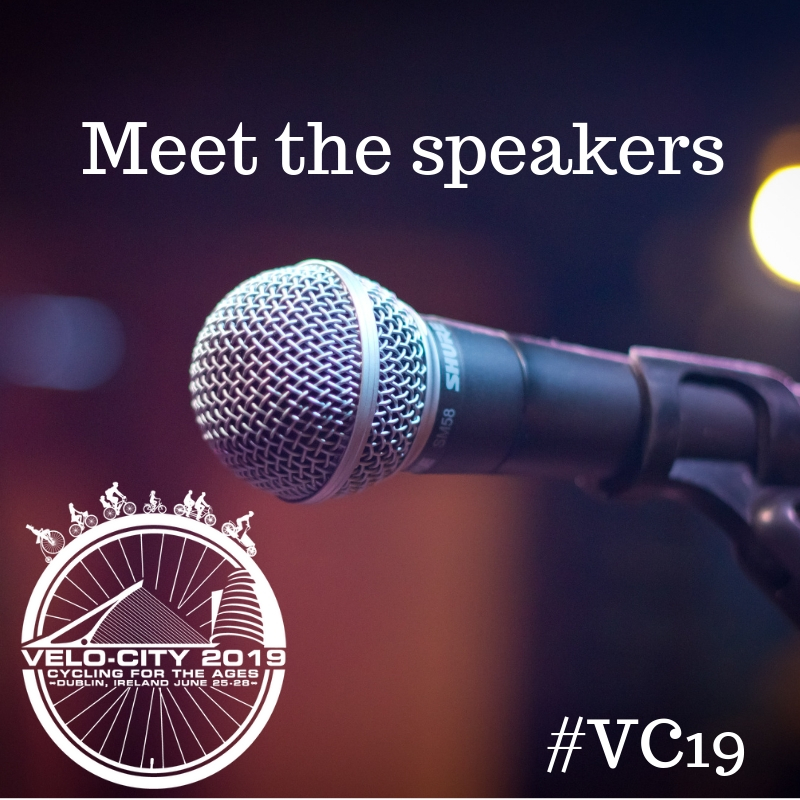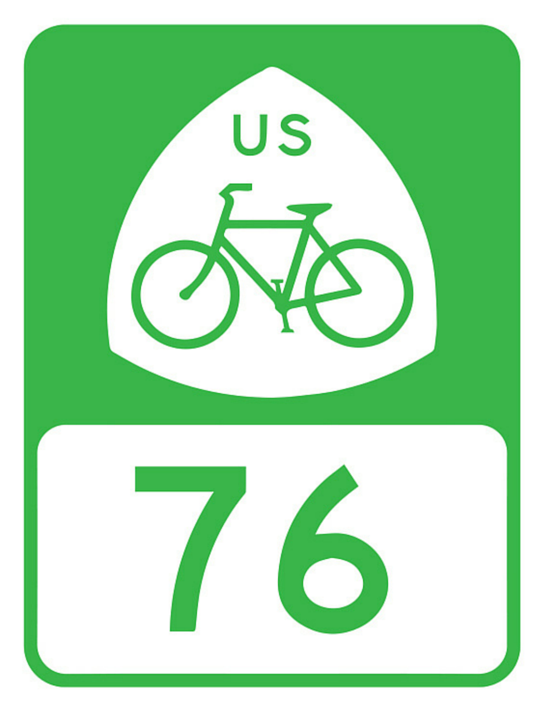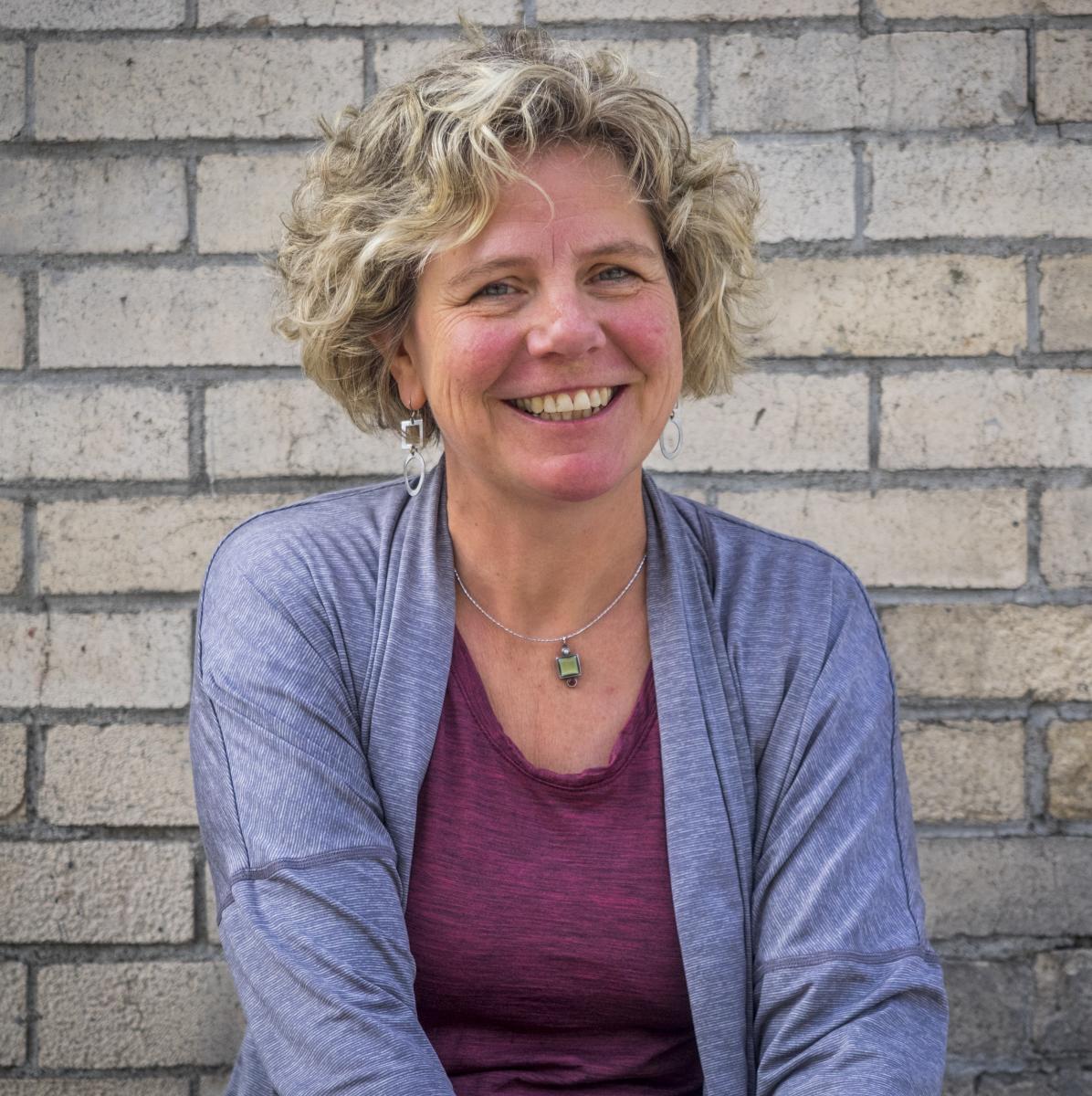
#VC19Keynote – Meet the speaker: Ginny Sullivan
We had a talk with Ginny Sullivan who will speak in the Cycling Tourism Plenary at Velo-city 2019 in Dublin this June. Read on to find out more about her work and cycling tourism in the United States! #VC19Keynote #MeetTheSpeakers #CyclingForTheAges
Virginia "Ginny" Sullivan is the Director of Travel Initiatives at Adventure Cycling Association, North America’s only organisation dedicated to bicycle tourism and travel with 53,000 members from across the world.
The programmes Ginny manages include officially designating cross country bicycle routes for the U.S. Bicycle Route System (almost 14,000 miles / 22,500 km of official routes recognized and signed as national routes by the U.S. Bicycle Route System); co-leading the Amtrak Bicycle Task Force, with a goal of seeing more carry-on bicycle services on trains across the US; working with National Park Service and State Park systems on bicycle tourism amenities and accommodations; and advocacy for safety by improving bicycle passing and distracted driving laws and inclusive transportation policy.
Ginny’s team also works to protect and improve Adventure Cycling's 47,283 miles / 76,094 km of cultivated and mapped bicycle routes across North America. These mapped routes are not official, in other words, the agencies and non-profits that manage the roads, trails, and highways have not officially recognized those facilities as bike routes. Ginny’s work is partner focused and her efforts are driven by the Adventure Cycling mission to inspire, empower and connect people to travel by bicycle.

Official sign of a US National Bicycle Route
ECF: What does ‘Cycling for the Ages’ mean to you?
VS: This theme is great for us. I love it because many NGOs are seeing an aging demographic of their members, and we need to be able to accommodate people of all ages and abilities whether they are cycling for transportation and commuting or going on a bike trip.
In the US, we generally know well how to design accessible bike paths for cyclists. Where we fail is with the implementation of the design. We know that we need to build a cycling network but we don’t prioritise it, and we have to continually battle for funding. In the US, motorized vehicles are really prioritized over the person.
‘Cycling for the Ages’ is a great theme because it can mean a lot of different things, including demographics – incorporating people who are often overlooked in the transportation conversations, communities that have been cut off. I am looking forward to being able to talk about it.
ECF: How do you link this theme to cycling tourism?
VS: This is a big area. Cycling tourism is growing big time in the US and there is a lot of interest around outdoor recreation. We look at it as a really growing economic development tool, especially in the western states that have been traditionally based on natural resource extraction and agriculture: states like Utah, Nevada, Montana, Idaho, and even parts of California.
Then the cycling tourism market gets neatly into the active tourism and outdoor recreation markets, and we’re seeing a huge growth in bikepacking and gravel grinding here in the US. These are really attracting younger people to bike touring, bike travel and bike trips, and to mountain biking as well. Adventure Cycling is really a part of that conversation. We have established the longest bikepacking route in the world over 20 years ago, called the Great Divide Mountain Bike Route. So we know this area well and we love to offer that to cyclists.
Another big topic to talk about when linking cycling tourism and ‘Cycling for the Ages’ is the e-bike and giving people an extended life on their bicycle. We have seen a growing interest in our tours from older people who want to bring their e-bikes and we have now created an e-bike friendly symbol. We still lack a lot of the infrastructure for cycling in the US, and many cycling roads are going through very raw areas where there’s no place to charge an e-bike. So it depends on the style of the tour, but e-bikes and adapted bikes can certainly make cycling tourism in the golden years much more accessible, which is an exciting prospect.
When addressing ‘Cycling for the Ages’ and more specifically cycling tourism, I also think that we just have to keep people safe out on our roads, and that is the big concern we have. There is still a big number of people who want to cycle on traditional bike paths and on paved roads. Finding safe places to help people get to where they want to go is really important.
ECF: How would you compare cycling tourism in the US and in Europe? Do aspiring cycling tourists encounter the same challenges?
VS: There are some givens that are the same: cyclists need some really good maps to get to their destinations, whether it’s an app on their device, some kinds of GPS waypoints or a hand-held map. They need that kind of information as well as welcoming accommodation. Places where they’re not going to be turned away if they walk in with a bicycle. We work on those things and I think that they’re relevant for both Europe and the US.
We have used what the ECF has been doing for years, which is looking at the economic impact of cycle tourism and talking about it to our rural communities. They are often put astray by other huge tourism destinations and that has really helped them grow opportunities for cycling, bike infrastructure development and route signing. So I think cycle tourism has really helped in our smaller communities and rural landscapes.
But I think that Europe is much better at providing dedicated infrastructure for cycling tourism, like separate facilities where you can really enjoy your time on your bike, and you don’t have to worry about cars rushing by. Although we have developed some really good paths in the US there is still a lot to be done in that regard. Some of those places are as good as the Rhine Cycle Route – for instance the Great Allegheni Passage, which is over 300 miles. But it’s not paved, so it’s still got some issues. We started working with Rails-to-Trails Conservancy to try to convince states to leverage more funding for cycling infrastructure in their state budget.
There is also a difference between the US and Europe in how we see safety and policy. I think that there is more value put on the human life and less on the motorised travellers in Europe. In America, we tend to spend more money for keeping motorists safe and we do that by putting vulnerable road users at higher risk. For example, rumble strips have become a way for our transportation agencies to keep cars from running off the road, whether people are distracted or tired, or if they are older and cannot see the road very well. So they are ramble stripping even designated bike roads, and if the shoulder on the other side is cut down from four feet (1.4 m) to a foot (30 cm), or to nothing, then the cyclist has to be on the roadway with the high-speed traffic.
ECF: How will the city of the future look like taking into consideration the gaps in the developing and developed worlds?
VS: Whether considering a developing or a developed country, I think that we need to continue to elevate the human scale and the human power. People need to reach their destinations and it’s not always sustainable to do so by motorized vehicles. We need to provide transportation that really meets people’s needs. Everyone may not be able to afford a car, bus lines or trains may not take people to the destination where they need to go to, so we need to provide active transportation and to build up these networks. We know how to do it – the world knows how to do it – we just need to implement it.
Non-motorized infrastructure is by far cheaper than creating big roadways for motorized vehicles. Whether you are coming up in the world as a developing country, or whether you are the UK, the Netherlands or the US, you just need to think of how to make the transportation system work for all people of all ages, abilities and demographics. This is a short and simple answer, but I think that it is universal and it shouldn’t be political. If our transportation folks looked at the dollars, that’s how it would work. A lot of European countries have already figured that out.
ECF: How do you think automated vehicles will shape cycling tourism in the future?
I just went to a session on automated vehicles with some experts of the National Bike Summit. Right now, especially in the US, we are very concerned about detection on automatic vehicles. There is no systemic approach as of now, and a lot of the intermediary approaches to automation do not detect cyclists and pedestrians accurately enough. It is very concerning. In a world of complete automation where 80% of the cars on the roadway are at some level animated, if they are supposed to automatically go around the cycle tourists, they need to detect them consistently.
But on the bright side, the fact that automation is coming could really benefit cyclists. If the engineers get this right and can figure out a way to detect who, on the road, has the most to lose, is the most vulnerable, you could see people feeling much safer on the road. I think technology could really help cycling tourism. The other thing is that as automation grows, and rideshare grows, the need for a lot of parking could diminish, which would also create more space on our roads to put infrastructure for cycling. So I think that all in all, technology could be a gift.
ECF: What do you expect from Velo-city 2019?
VS: I expect to learn a lot from my colleagues from all over the world. The last time I joined an ECF meeting it was with the National EuroVelo Coordinators, and I learned so much from getting to talk, network and discuss common challenges or challenges I hadn’t even thought of, which we have now started to encounter here as well over the last couple of years. I look forward to learning and sharing the expertise we developed in our work here at Adventure Cycling. It’s going to be fun to talk about where we have come from in the last decade!
Ms. Virginia Sullivan is a speaker in the fifth plenary session of Velo-city 2019 Dublin, entitled “Cycle Tourism” to take place on Thursday, June 27th 2019 at 17.00-18.00. More info on the Velo-city 2019 Programme, Speakers and Sessions at: https://www.velo-city2019.com Get your ticket here: https://www.velo-city2019.com/registration
News category:
Contact the author
Recent news!
Upcoming events
Contact Us
Avenue des Arts, 7-8
Postal address: Rue de la Charité, 22
1210 Brussels, Belgium









